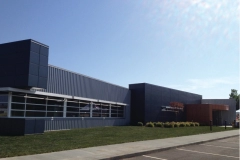PH1 Port Hedland
PH1 Port Hedland Data Center, Australia
As technologies gain further momentum in the mining industry, the business transformations required to adopt these new technologies remain a critical challenge facing the sector. At NEXTDC we have recognised these challenges and the requirements for the Technology industry to invest in the Pilbara. As NEXTDC continues to expand on its data centre portfolio, and building out its edge product, our PH1 development will be the foundation for bringing cloud-based services to the edge, and with our carrier partners offering high speed, low latency connectivity, PH1 will enable the digital transformation of our customers in the region. NEXTDC’s Edge data centre products – located in Port Hedland is strategically located near critical mining and port operations with direct connectivity to operational centres in Perth – This crucial infrastructure developments will enable the industry to harness technologies to build upon the sectors safety, sustainability and productive goals. Harnessing NEXTDC’s highly connected ecosystem of networks and cloud providers, PH1 connects mining and resources companies to NEXTDC’s national data centre platform and ecosystem of over 770 digital services providers including all major networks, public clouds and digital services providers across Australia. With a total planned capacity of 1.5MW, PH1 is engineered to support the highest levels of customer availability, security and interconnection with the backing of NEXTDC’s industry leading 100% uptime service guarantee. Benchmarking energy efficiency and sustainability is built into PH1’s DNA. The facility utilises behind-the-meter power generation (solar), water conservation, recycling, land-fill diversion and ethical eWaste disposal. In addition to this, NEXTDC’s customers can opt-in to our Climate Active Certified NEXTneutral program allowing customers to offset their carbon footprint. We are here to help on your ESG journey and by placing your technology within NEXTDC, you are contributing significantly to reducing IT’s carbon footprint.
N+N
N+1
Cooling Redundancy
N+1


